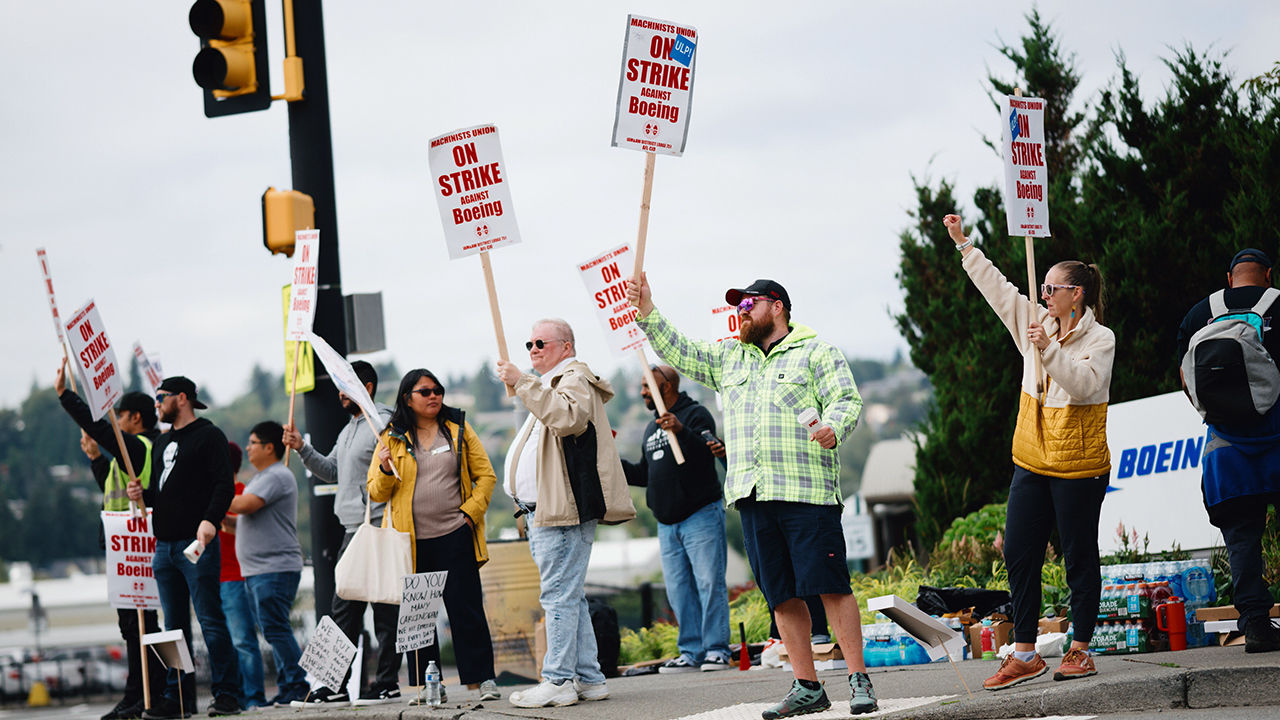
When Kelly Ortberg landed in the chief executive’s chair at Boeing last month the list of problems he had to confront at the aerospace giant was already daunting. Production of the 737 MAX passenger jet, Boeing’s most important product, has been curtailed after a mid-flight blowout of a fuselage panel in January. Production of the larger 787 Dreamliner has also slowed down owing to supply-chain problems. Plans to launch the even bigger 777X are years behind schedule. Add to that losses at Boeing’s usually lucrative defence division and an embarrassing software failure that left astronauts piloting its Starliner spacecraft stranded on the International Space Station and some may wonder why Mr Ortberg took the job.
Boeing’s boss now has yet another crisis to deal with. On September 13th a strike by 33,000 union members, a fifth of the company’s workforce, hit sites in Washington state, where the firm assembles the 737 MAX, bringing production to a halt. Morgan Stanley, a bank, estimates that the strike will cost Boeing $2bn of cash a month at a time when its finances are already under strain. To conserve funds, Boeing said on September 18th that it would furlough tens of thousands of white-collar workers for one in every four weeks the strike continues. The last big walkout at the company, in 2008, dragged on for 58 days. This one may still prove to be short-lived. But, if it doesn’t, it could leave lasting damage.
Pay is at the centre of the latest dispute. Boeing offered its employees a 25% rise over four years; its workers are demanding 40%. That would be less of a problem for the company than it sounds—assembly accounts for a small fraction of the total cost of producing its planes, and wages are a small fraction of that.
By holding out, Boeing will delay its effort to return production to previous levels. The firm says that it has been making around 30 737 MAXs a month, so each day of picketing means one fewer plane. Even if the strike is short, Boeing is expected to deliver just 400 planes this year, half of what it managed at its peak in 2018.
A protracted strike would make Boeing’s financial position even worse. The 737 MAX should be its cash machine, but has not dispensed reliably since two fatal crashes linked to faulty software led to its temporary grounding in 2019. Since then Boeing’s operations have burned through $25bn of cash and the company has racked up net debts of $45bn. Airbus, its main rival, has almost none.
Before the strike, analysts projected that the firm would stop burning cash in the second half of this year, having lost $7bn of it through its operations in the first half. A prolonged stoppage would reverse its progress.
Boeing will also risk having its credit rating downgraded by the big agencies if the stoppage is prolonged. That will make it more expensive to top up its $11bn cash pile. The company also has $22bn of bonds that will need to be refinanced in the next three years, for which the interest bill would go up. To maintain its investment-grade rating Boeing may thus choose to raise money by issuing stock (most analysts reckon that $10bn should be enough). That would be a further blow to the company’s long-suffering shareholders; Boeing’s share price is already down by 65% from its high in 2019.
Boeing may take comfort in its vast backlog of orders for passenger jets. But Airbus’s is far bigger. The European firm is likely to manufacture around 770 planes this year, and its share price is close to its pre-pandemic high. Airbus also recently announced that it would launch a new aircraft by the end of the decade. Boeing may not be at risk of collapse, but the longer it takes to spin up its engines again, the further behind it will fall. ■
To stay on top of the biggest stories in business and technology, sign up to the Bottom Line, our weekly subscriber-only newsletter.

















